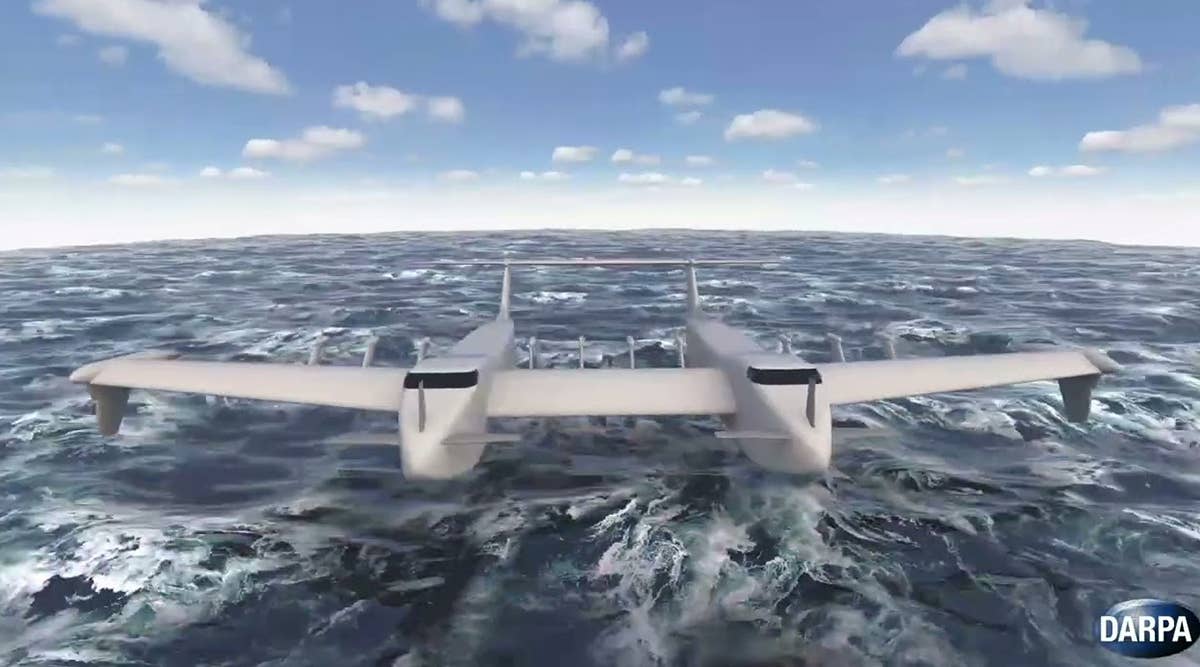General Atomics Receives DARPA Contract To Develop Liberty Lifter Seaplane
The conceptual platform is designed to carry heavy loads while flying in ground effect.

An artist rendering of DARPA’s Liberty Lifter. [Courtesy: DARPA]
A new development phase for the Liberty Lifter, a large military seaplane concept, is under way, roughly on schedule.
The Pentagon’s Defense Advanced Research Projects Agency (DARPA) awarded a contract of just under $8 million to General Atomics Aeronautical Systems Inc. for research and development work on the project. Earlier this year DARPA told FLYING it was evaluating proposals and expected to issue a contract in the fall.
DARPA said General Atomics will perform the work in Poway, California, where the OEM is based, with completion expected around May of next year.
The planned aircraft is a tactical and strategic airlifter meant to carry loads similar to those of the C-17 Globemaster. The proposed design features twin fuselages that resemble the hulls of a catamaran and provide more floor space for cargo and passengers. Its name reflects similarities between its proposed missions and those carried out by the Liberty-class ships of World War II.
DARPA conceived the Liberty Lifter to bring new technology and a novel approach to military air and sea transport. Operating from water frees the aircraft from dependence upon airfields. It is designed to deploy from ports or beaches and will use inexpensive materials and construction techniques to cut costs.
The planned aircraft’s biggest departure from traditional transports lies in the way it flies. Like the giant Ekranoplan wing-in-ground effect (WIG) vehicles built in the former Soviet Union during the Cold War, the Liberty Lifter is meant to fly low over water using ground effect to extend range and boost load-carrying capacity. Unlike those older WIGs and newer proposals in development like the Regent Seaglider, the Liberty Lifter would be able to fly as high as 10,000 feet if necessary.
DARPA has said it hopes to have a flying version of the aircraft in roughly five years.

Sign-up for newsletters & special offers!
Get the latest FLYING stories & special offers delivered directly to your inbox






